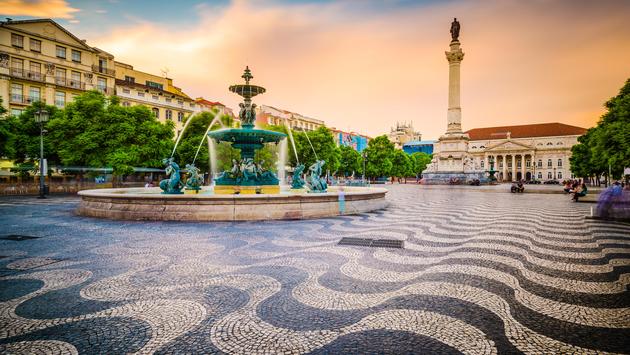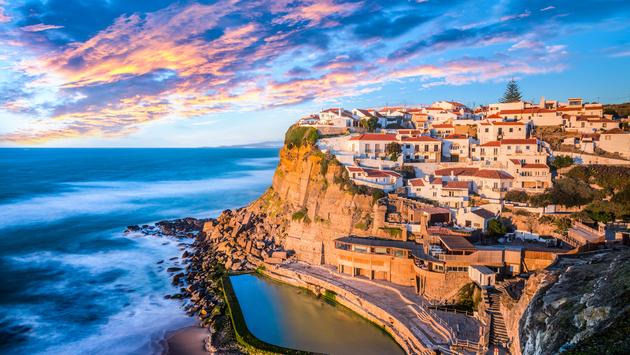One-on-One With Visit Portugal’s Celina Tavares

As Europe reopens, many travelers are thinking about planning a trip, but figuring out what is open, when and where and what the restrictions are for visitors is often complicated.
TravelPulse spoke to Celina Tavares, director USA for Visit Portugal, to find out what it’s like to visit the country right now and get the inside scoop on where to go and what to do.
Celina Tavares (CT): Tourism as a whole is starting to recover as countries re-open and more people become vaccinated. Portugal is open and prepared to welcome tourists and we have taken precautions to ensure the safety of our visitors and residents.
Portugal is among the European countries with the highest level of testing and our vaccination strategy aims to have the entire adult population inoculated by September. Vaccination in Portugal is running smoothly and according to the health authority’s plan. Portugal has 10.2 million inhabitants of which, today, 5.5 million have received the first vaccine and 3.2 million are already fully vaccinated.
We firmly believe that, considering the above, now is the time to safely restore movement between countries, balancing public health measures with connectivity and mobility.
TAP Air Portugal has already restarted most of their operation to Lisbon, from Newark, Boston, Washington Dulles, Miami, Chicago and San Francisco and to Porto from Newark. United Airlines will restart Newark-Lisbon on July 2nd, with daily flights, and Delta will restart their JFK-Lisbon operation on August 1st, with daily flights. Azores Airlines is also operating Boston–Ponta Delgada and Boston–Terceira.
TP: What should travelers know before coming to the country?
CT: Portugal’s tourism offer is waiting for you: our nature, landscapes, beaches, monuments, culture and people are ready to welcome you back. Most businesses, hotels, golf courses, restaurants, shops, monuments, museums, tourism companies and activities are now fully operating.
Tourism companies and attractions have also implemented the health and safety protocols recommended by us and the Portuguese Health Authorities.
All travelers must present proof of a negative RT-PCR Test (nucleic acid amplification or similar NAAT Test) done within 72 hours prior to departure or Rapid Antigen Test done 48 hours prior to departure (children under 12 years of age are exempt) and also fill the Passenger Locator Card before departure or onboard.
Travelers should also book in advance since there is a limited capacity in restaurants, tours, activities, monuments, museums and cultural activities, make sure to make your reservation in advance.
Face masks are mandatory for everyone over 10 years old. The current Covid measures might change, according to the evolution of the pandemic so we advise you to get updated information closer to when you are ready to travel.
TP: What are some of the not-to-be-missed destinations in Portugal?
CT: As a country Portugal has a very diverse landscape and tourism experiences. The Portuguese culture, UNESCO Heritage site, Wine and gastronomy and nature and beaches are but a few examples of what makes it one of the top destinations for the US market.
From what we’ve been seeing so far, it doesn’t look like there will be a major shift on the US demand for Portugal, although we are seeing an increasing interest in Portugal-only tours and combining Portugal’s main cities (Lisbon and Porto) with lesser-known areas in the country like the Islands of Azores and Madeira or coastal regions with amazing surf spots or even other areas such rural villages and their very own traditional ways.
TP: Are there some undiscovered gems travelers should visit?
CT: So many and so much to do!
About a 40-minute drive from Lisbon, there are iconic small towns and villages to explore such as Mafra, with its famous 17th-century Palace-Convent. On the seaside, the traditional fishing villages of Azenhas do Mar and Ericeira are the perfect excuse to try the fresh fish and shellfish dishes and surf.

In the Center of Portugal, there are two of Portugal’s best-kept secrets: the Schist villages, a trademark of the region, are all connected by their traditional building techniques using the very rock that gives them their name: Schist. The Historical Villages are a network of 12 unique medieval villages.
Batalha, Alcobaca and Tomar are home to three World Heritage Sites: Monastery of Batalha, the Monastery of Alcobaca and the Templar Castle and the Convent of the Knights of Christ, respectively.
Aveiro is Portugal’s Art Nouveau river city, which you can visit by Moliceiro (traditional boat tours). A 20-minute drive away is the stunning beach of Costa Nova, known for its striped fishermen cottages and the famous porcelain manufacturer Vista Alegre Factory.
In Alentejo, these are a must-visit: Porto Covo, Vila Nova de Milfontes, Odemira and Zambujeira do Mar are typical fishing villages on Alentejo’s protected coastline, known for their amazing beaches, surfing and water sports.
On the countryside, Alter do Chão is where the Coudelaria Real, the Royal Stud Farm, was founded in 1748 by King João V, to help protect the Lusitanian horse breed.
The fortress of Elvas and Évora’s historical center are World Heritage Sites. Close to the border with Spain are the charming medieval villages of Castelo de Vide, Marvão and Mértola. The picturesque and traditional areas of Portalegre, Borba, Redondo, Vidigueira, Reguengos de Monsaraz, Évora and Beja are base for most of the wineries and production sites for some of the best Portuguese wines.
Braga and Guimarães are both about a 40min drive from Porto. In the Douro Valley, there are also the lesser-known areas of Miranda do Douro and Foz do Coa, which gained international recognition after the discovery of a series of rock paintings and carvings dating back to the Upper Paleolithic times. Viana do Castelo, Braganca, Caminha, Ponte de Lima and Casa de Mateus, in Vila Real, are another example of small villages not to be missed for their traditional architecture, gastronomy and festivities.
Algarve is very famous for its long promenade, sandy beaches and its fisherman villages such as Odeceixe, Aljezur, Faro and Tavira.
Madeira islands are a haven of natural beauty. The exotic colors of the flowers stand out from the blue sea and the emerald green vegetation. Two-thirds of the archipelago is a protected area and home to the largest Laurisilva forest in the world.
Azores is a haven for all looking to put their hiking boots to work: nine islands designed by nature, with more than 60 hiking trails and surrounded by marine life. Azores is a migrating route for over 24 cetacean species and has one of the largest whale sanctuaries in the world.

TP: What is the best time of year to plan a trip to Portugal?
CV: Portugal has very mild winters and hot summers, so it’s the perfect destination all year round. December, January and March are the rainiest months, since it is wintertime.
TP: Are there a lot of tourists visiting the country right now?
CV: Given that Portugal and the world only started reopening in May/June, we are slowly seeing an increase in tourists and are expecting an extended summer season.
We are confident that with the increasing vaccination in Portugal and worldwide we will be in a position for our tourism sector to start the recovery towards our 2019 levels from September onwards.
